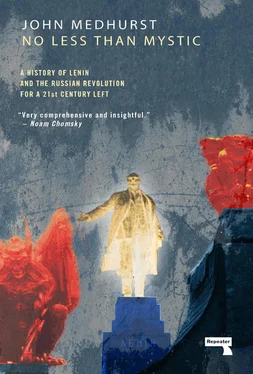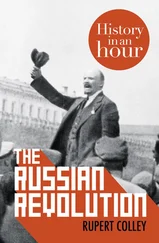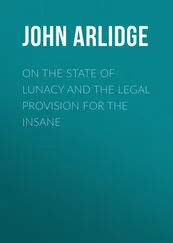The hostility of Tsarist governments to the Zemstvos arose from the growing number of semi-urban professionals, such as doctors, teachers and agronomists, who worked within them. These were known as the “Third Element”, to distinguish them from the First and Second Elements (the governors and the elected Deputies) who were drawn from long-established landowning families. The Third Element, however, had worked their way up from peasant or lower-class backgrounds and their politics were brusquely democratic. In response to their growing influence, the Ministry of the Interior introduced reforms to Zemstvo procedures in 1890 that denied Jews or landowning peasants the right to be elected to the assemblies, and gave direct control of Zemstvo policies and personnel to provincial governors who answered only to the Ministry. The possibility of local democracy promised by the Zemstvos slammed shut.
At the turn of the century, approximately 80% of the citizens of the Russian Empire were classified as peasants, and the majority of these were illiterate (although by 1914 a growing number of rural primary schools were bringing literacy to the villages). The urban proletariat itself was still half peasant–many were seasonal workers whose main attachment was to their families back in the village. Even so, between 1865 and 1917 the urban population of the Russian Empire grew from 7 million to 28 million. By 1914 half of St Petersburg’s population of 2.2 million people had arrived there in the previous twenty years. 3In the capital, and even more so in socially conservative Moscow, these workers initially kept to the patterns of life and cultural traditions of the peasantry. So did the vast army of migrant labour which in autumn and winter headed to the cities to find factory, transport or construction work, returning to their villages in the spring.
The Russian bourgeoisie, in turn, lacked the collective ethos of the politically assertive middle class of Victorian England. This only started to appear after the great famine of 1891. After a terrible crop failure, a famine began in the Volga region which spread rapidly to the Urals and the Black Sea. Had the government directed grain to the affected regions it might have been curtailed but it did nothing, not even banning export of grain, and by 1892 half a million peasants had starved to death. This led to fierce public criticism of the government’s slow and incompetent reaction. After first denying the existence of a famine and censoring newspapers who reported it, the government finally authorised the creation of voluntary bodies to coordinate famine relief. The result was the emergence in Russia’s political life of an organised civil society, disgusted and angry with the official organs of its own state.
Meanwhile, the Russian government set out on a grand industrial experiment, the building of the Trans-Siberian Railway between 1892 and 1903, that would define the efforts of the progressive bourgeoisie to drag the country out of its feudal past. As conceived by Count Witte, the most intelligent and far-sighted Minister to serve under Alexander III and Nicholas II, the Trans-Siberian Railway was one element of a conscious industrial strategy by the Ministry of Finance. The overriding necessity for economic growth was a stable financial climate. To this end the ruble was linked to gold in 1897. At the same time taxation was raised to ensure the state had enough reserves to fund and support projects such as railway modernisation.
Foreign investors were granted generous tax concessions and subsequent investment from Britain, France and Germany provided the impetus to new industries like oil, chemicals, metallurgy, rubber and electrical engineering. Between 1865 and 1890, the number of enterprises employing more than a hundred workers had already grown from 706,000 to 1,432,000. Aided by a growing railway network, Russian industry took off in the 1890s. In the decades before the First World War the production of coal in Poland and the Donetz Basin, iron and steel in Ukraine, and oil in Azerbaijan increased ten-fold. But this did not mean a national capitalism. By 1913, out of a total 5.25 billion rubles invested in Russian industry, about a third was foreign capital.
Many of these new industries were on the semi-colonial fringes of the Empire. The Russian Empire had a social and administrative core–Greater Russia–but it also encompassed the “national territories” of Poland, Finland, Belarus, Latvia, Estonia, Lithuania, Ukraine, Georgia, Bessarabia, Armenia, Azerbaijan and numerous Muslim provinces in Central Asia. By the reign of Nicholas II non-Russians formed more than half the population of the Russian Empire. In response the Russian state imposed a policy of “Russification”, the persecution of non-Orthodox religions and the banning of non-Russian native languages from schools, literature, newspapers, street signs and other public displays. Russification invariably provoked movements for political and cultural independence within the territories it dominated. It made little difference if these were “political” or not. Faced with an inflexible Russian state, they all assumed revolutionary characteristics.
Ukraine and Poland were the largest “nations” trapped within the Empire. In 1863 Polish nationalists were provoked to armed revolt after the Tsar’s government forcibly conscripted young Polish men into the Russian army. This led to the “January Uprising”, a massive revolt across what was known as the Polish-Lithuanian Commonwealth. The rising was led by student radicals, Polish-Lithuanian army officers and elements of the Catholic Church. It took Russian troops sixteen months to crush the rebellion, after which its leaders were executed and 80,000 men and women exiled to Siberia. But the lesson was not forgotten. Poland’s next challenge to the Russian Empire would not be led by a ragtag collection of bourgeois nationalists, but by Josef Pilsudski’s Polish Socialist Party.
Similarly, the refusal of the Russian state to concede any autonomy to Ukrainian nationalism (it would not even allow public use of the word “Ukraine”) stoked rebellion. Kiev became a centre of cultural ferment based on Ukrainian language and literature. The widely read Ukrainian-language newspaper Fatherland spread nationalist sentiment throughout Ukrainian society, from peasant villages to the clubs of the capital. Since the Emancipation Edict, Ukrainian landowners (three quarters of whom were “foreign”, i.e. Russians or Poles) had enclosed common fields and pastures used by peasants. Ukrainian nationalists in Kiev decried this as an example of Great Russian oppression. Georgia and Azerbaijan added socialism to the brew. In the later 19th century peasant labour flocked to Tiflis and Baku to work in the booming new oil industry, forming a young working class receptive to social-democratic politics.
Some did not think Russia should industrialise at all. The Narodniks and other populists believed that it need not expand into a full-blown urban capitalism or go through what some Narodniks labeled a “very foul purgatory” before reaching socialism, but instead develop its agriculture on the basis of democratically controlled small-scale production. 4After Emancipation the peasants were in theory assured of their own allotments, but these were in fact held in title by the Obschina or Mir , the village commune, and they could not do with them as they pleased. If this system prevailed over that of private landlordism, then a very different economic future for Russia–one of “popular production” based on local peasant agriculture and communal control–might beckon.
Vasily Vorontsov’s The Fate of Capitalism in Russia (1882), “one of the most influential books to appear in Russia in the second half of the 19th century”, 5denied that Russia must automatically follow England’s economic path, i.e. the complete disappearance of the peasantry and its absorption into the proletariat. Vorontsov suggested that Russia demonstrated a number of conflicting modes of production, that Russian capitalism was an “imitation” and a “transplantation” of real capitalism. He believed the Mir, although neglected by governments and decomposing as a voluntary alliance, was still “a group of persons forcibly bound together by mutual responsibility” 6and could still be used by an interventionist government to meet the peasants’ aspirations half-way and avoid the tragedy of class war. Even Marx, in a letter of 1881, had said that the rural commune might, in the right conditions, become “the starting point for the regeneration of Russia”. 7In his last published writing, Marx suggested, “If the Russian Revolution becomes the signal for a Proletarian Revolution in the West, so that both complement each other, the present Russian common ownership of land may serve as the starting point for a communist development”. 8
Читать дальше












